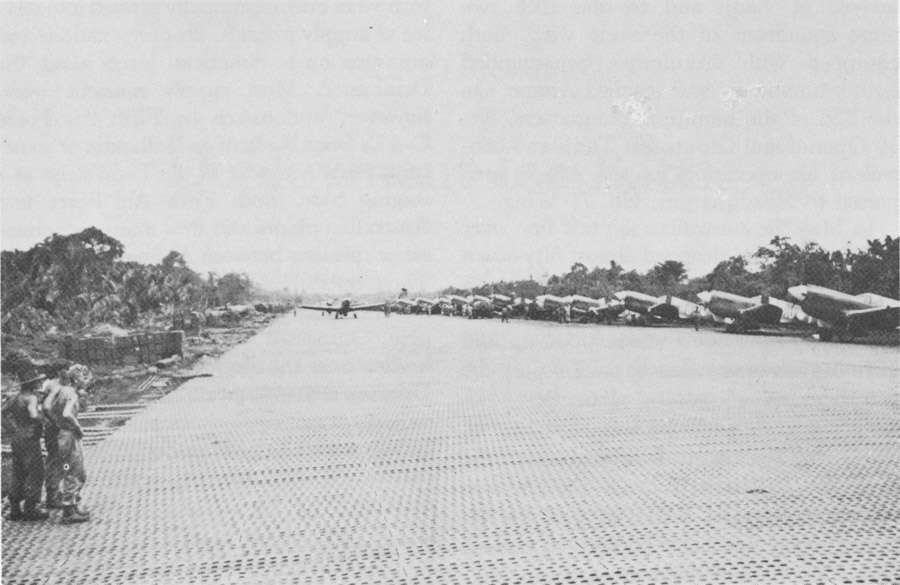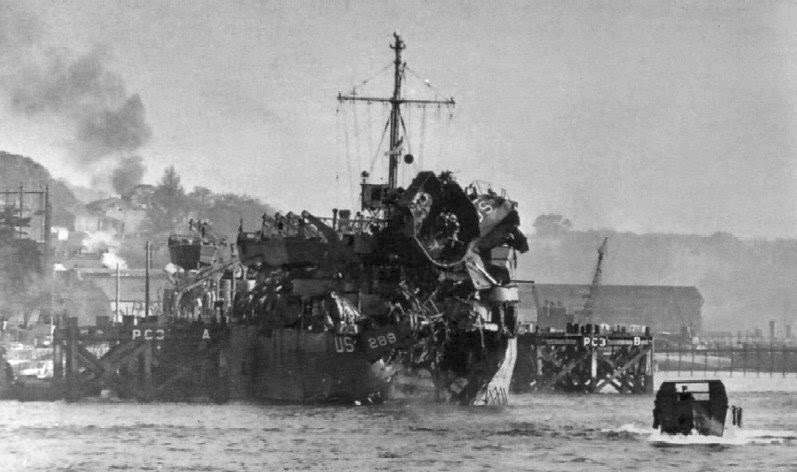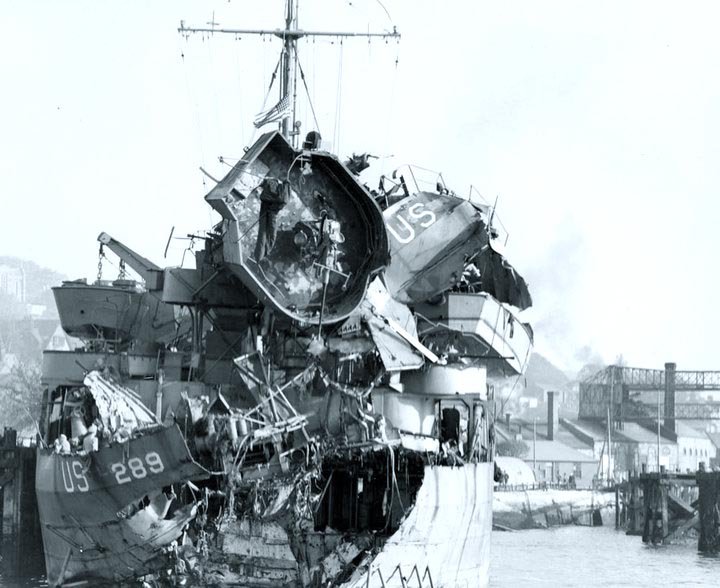Air Operations, Carolines
21 5th Heavy Bomb Group B-24s attack the airfield at Woleai.
[Air Operations, CBI
BURMA- 7 490th Medium Bomb Squadron B-25s attack a rail bridge and a canal bridge in the Mandalay area. 24 10th Air Force A-31s attack Japanese Army positions near Buthidaung.
- 12 459th Fighter Squadron P-38s attack targets on the Tiddim road.
- 1 B-25 and more than 80 fighters and fighter-bombers attack targets throughout the Mogaung Valley.
- In response to a Japanese Army offensive in Honan Province, the 14th Air Force opens a bombing campaign against bridges spanning the Yellow River and rail yards at Chenghsien and Kaifeng. Also, the CACW is redeployed so as to guard the B-29 fields around Chengtu.
- 26 308th Heavy Bomb Group B-24s attack two bridges spanning the Yellow River near Chengchow, just as Chinese Army troops evacuate the city.
- 6 341st Medium Bomb Group B-25s and 16 P-40s attack Yangsin.
- 18 14th Air Force P-38s, P-51s, and P-40s attack a barracks at Nanchang.
- 2 P-40s attack a Japanese Army troop column near Tengchung.
- 36 10th Air Force A-31s attack Sangshak-Sansak.
Air Operations, Europe
RAF BOMBER COMMANDEvening Ops:
- 88 Lancasters and 4 Mosquitos of No. 5 Group attack an explosives factory near St Médard En Jalles near Bordeaux. Only 26 aircraft bomb the target. Because of haze and smoke from flares in woods near the factory, the Master Bomber orders the remainder of the forcr to retain their bombs.
- There are no losses.
- 51 Lancasters and 4 Mosquitos of No. 5 Group are sent to hit the Kjeller aircraft factory near Oslo. Visibility is clear and the bombing is accurate.
- No aircraft are lost.
- 26 Mosquitos are sent to Hamburg, 40 aircraft are involved in Resistance operations and there are 2 RCM sorties.
FRANCE:
- 116 1st Bomb Division B-17s, escortd by 205 VIII Fighter Command fighters, attack the Avord Airdrome.
- Losses: 2 B-17s with their crews, 2 P-51s with their pilots
- Of 106 3rd Bomb Division B-17s dispatched against V-weapons sits at Sottevast, just 18 attack the primary and targets of opportunity.
- 2 B-17s are lost
- 34 20th Fighter Group P-38s, led by a 'droopsnoot' model, bomb the Tours Airdrome.
- 49 55th Fighter Group P-38s, led by a 'droopsnoot' model, bomb the Chateaudin Airdrome, which is also dive-bombed by 32 353rd Fighter Group P-47s.
- During the afternoon, 47 2nd Bomb Division B-24s, escorted by 50 361st Fighter Group P-47s, attack the V-weapons sites at Marquise/Mimoyecques.
- 1 B-24 is lost
- Diverted from their primary target by cloud cover, 16 56th Fighter Group P-47s dive-bomb and unidentified Paris-area airdrome with 500-pound fragmentation bombs.
FRANCE:
- Unable to locate their primary target, 16 IX Bomber Command B-26s attack the Cormeilles-en-Vexin Airdrome.
- 250 IX Bomber Command B-26s dispatched to attack marshalling yards in France are recalled because of heavy cloud cover over the targets.
ITALY:
- 12th Air Force B-25s and B-26s attack rail bridges and viaducts.
- XII TAC A-20s attack a fuel dump.
- XII TAC P-40s and P-47s attack a fuel dump, gun emplacements, and numerous rail targets throughout Italy.
ITALY:
- 168 15th Air Force B-24a attack the port area of San Stefano al Mare.
- 108 15th Air Force B-24s attack the port area at Orbetello.
- 188 15th Air Force B-24s and B-17s attack a steel works and the port area at Piombino.
Air Operations, New Guinea
- 12 63rd Heavy Bomb Squadron SB-24s attack the airfield at Wakde before dawn.
- 25 38th Medium Bomb Group B-25s bomb and strafe Wakde airfield.
- 47 43rd and 90th Heavy Bomb Group B-24s attack Biak Island.
- 23 345th Medium Bomb Group B-25s attack the airfield at Sawar.
- 32 22nd Heavy Bomb Group B-24s attack a Japanese Army headquarters at Sarmi.
- 12 17th Reconnaissance Squadron B-25s attack coastal targets between Sarmi and Sawar.
- V Bomber Command B-25s and A-20s attack the airfield at Efman.
- More than 180 A-20s and V Fighter Command fighters and fighter-bombers attack numerous coastal targets in northern and northeastern New Guinea.
- During the night, 17 63rd and 868th Heavy Bomb squadron SB-24s attack Wakde Island.
Atlantic
- German torpedo boat T-24 sinks the HMCS Athabaskan.
- German motor torpedo boats S-100, S-130, S-136, S-138, S-140, S-142, S-143, S-145, S-150 (5th and 9th Motor Torpedo Boat flotillas) attack a convoy of 8 US tank landing ships entering Lyme Bay, torpedoing and sinking LST-507 and LST-531 off Portland Bill, England and damaging LST-289.
Battle of the Atlantic
Early in the morning Wellington 'W' of No 612 Squadron spots the wake of a U-boat. The aircraft attacks U-193 from 50 feet and after passing over the U-boat, the rear gunner sees the bows lift out of the water and roll over.
| Class | Type IXC/40 |
| CO | Oberleutnant zur See Ulrich Abel |
| Location | Bay of Biscay, W of Nantes |
| Cause | Air attack |
| Casualties | 59 |
| Survivors | None |
CBI
BURMAThe Chinese and American open their offensive for the capture of Myitkyina. K Force leads off, moving by an indirect route that cross the Kumon Range toward Ritpong. The Chinese 38th Division, attacking frontally and in turning movements, force the Japanese to withdraw slowly towards Wala.
CHINAThe Japanese offensive in Honan is stepped up. The 14th Air Force sends 26 B-24s, escorted by 10 P-51s, to destroy two bridges over the Yellow River near Chengchow after the Japanese drive Chinese forces from the area. The Japanese continue to make progress, forcing the Chinese-American Composite Wing to guard the B-29 fields at Cheng-tu. The 14th Air Force is to prevent Japanese forces from crossing the Yellow River and attack the rail lines providing supplies to the armies.
[English Channel
3 American LSTs, carrying out invasion exercises ('Exercise Tiger'), are torpedoed by MTBs in Lyme Bay. 749 are killed.
[New Britain
The 40th Infantry Division begins the relief of the 1st Marine Division.
[New Guniea
In the Aitape area the first encounters take place between American troops and the small Japanese garrison. Some American units are transferred in an amphibious operation to Nyaparake, near the Nigia River, to hold up the advance of Japanese reinforcements sent to Aitape from Wewak.
[Occupied France
- The Resistance damages 8 tanks and steals an armored car from the Renault works near Paris.
- Pétain announces that France is threatened by civil war.
Pacific
The Japanese submarine I-183 is sunk by the US submarine Pogy (SS-266) off Kyushu, Japan.
[United States, Politics
The Secretary to the United States Navy, Frank Knox, dies. He has played a large part in the revival of the navy since Pearl Harbor.
[Images from April 28, 1944
|
|
|
|



